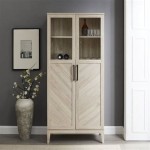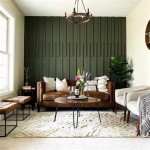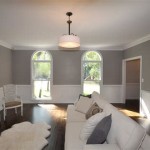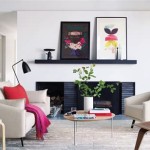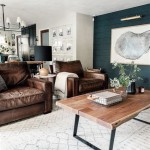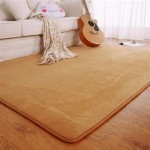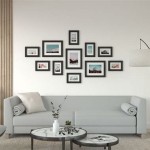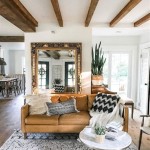```html
Living Room Design: Exploring the Coffee Table-Free Concept
The coffee table has long been considered a staple in living room design. It serves as a central point, offering a convenient surface for drinks, books, and decorative items. However, a growing number of homeowners and designers are exploring alternatives to the traditional coffee table, rethinking its necessity and embracing the benefits of a living room without one. This article examines the rationale behind this design trend, explores various alternatives, and outlines the advantages of foregoing the conventional coffee table.
Deciding to exclude a coffee table from a living room layout is not simply a matter of aesthetics; it often stems from practical considerations. Smaller living spaces, for instance, can feel cramped and overwhelmed by a large coffee table, hindering movement and disrupting the flow of the room. Families with young children might also opt to remove the coffee table to create a safer environment, eliminating sharp edges and providing more open space for play. Furthermore, minimalist design philosophies prioritize decluttering and maximizing space, making the coffee table, with its potential for accumulating clutter, a natural target for elimination.
The absence of a coffee table also encourages a shift in the way the living room is used. Instead of primarily serving as a space for passive entertainment centered around a television and coffee table, the room can become more conducive to conversation, movement, and other activities. This design choice can foster a more open and inviting atmosphere, encouraging interaction and a greater appreciation for the overall space.
Flexibility and Enhanced Space
One of the most compelling arguments for a living room without a coffee table is the enhanced sense of space and freedom of movement it provides. In smaller living rooms, eliminating the coffee table can dramatically improve the perceived size of the room, making it feel less cluttered and more open. This is particularly important in apartments or homes where space is at a premium.
The absence of a coffee table allows for more flexible furniture arrangements. Without a fixed central point, sofas and chairs can be positioned in various configurations, adapting the room to different needs and activities. This adaptability is particularly useful for those who frequently rearrange their furniture or host gatherings that require more open space.
Furthermore, a coffee table-free living room is often easier to navigate. There are no obstacles to circumnavigate, allowing for smoother and more natural movement within the space. This can be especially beneficial for individuals with mobility issues or those who simply prefer a less cluttered environment.
Exploring Alternative Surfaces and Storage Solutions
While the coffee table provides a convenient surface, its function can be easily replicated and even improved upon by alternative solutions. These alternatives not only offer a place to set drinks and books but can also incorporate storage and enhance the overall aesthetic of the room.
Side Tables: Placing smaller side tables next to sofas and chairs provides individual surfaces for each seating area. This allows guests or family members to have their own dedicated space for drinks, snacks, and other personal items. Side tables come in a variety of styles, materials, and sizes, allowing for seamless integration with the existing décor.
Ottomans: Ottomans offer a versatile alternative to the coffee table. They can serve as footrests, additional seating, or even a surface for placing trays. Upholstered ottomans add a touch of comfort and elegance to the room, while those with built-in storage provide a practical solution for organizing items.
Floor Cushions and Poufs: For a more casual and bohemian aesthetic, floor cushions and poufs can provide comfortable seating and serve as makeshift tables. These options are particularly suitable for low-profile seating arrangements and create a relaxed and inviting atmosphere.
Built-in Storage: Incorporating built-in storage solutions, such as shelves or cabinets, can provide ample space for storing books, magazines, and other living room essentials. This eliminates the need for a coffee table to serve as a storage hub and helps maintain a clutter-free environment.
Trays on Rugs: For a temporary surface solution, placing a large tray directly on the rug near the seating area can provide a stable platform for drinks and snacks. This option is particularly useful for informal gatherings and can be easily moved or removed as needed.
Aesthetics and Design Considerations
The absence of a coffee table can significantly impact the overall aesthetic of a living room. It can create a more minimalist and streamlined look, emphasizing the other design elements in the room. However, careful consideration must be given to ensure that the room does not feel empty or incomplete.
Focal Point: Without a coffee table to serve as a central point, it is important to establish an alternative focal point in the room. This could be a statement piece of artwork, a large window with a scenic view, or a well-designed fireplace. The focal point should draw the eye and create a sense of balance and visual interest.
Area Rug: An area rug can help define the seating area and ground the furniture in the absence of a coffee table. Choose a rug that is appropriately sized for the space and complements the overall color scheme and style of the room.
Lighting: Proper lighting is crucial in a living room without a coffee table. Layered lighting, including ambient, task, and accent lighting, can create a warm and inviting atmosphere and highlight specific features of the room. Floor lamps and table lamps can provide additional illumination and serve as decorative elements.
Accessorizing: Thoughtful accessorizing is essential to prevent the room from feeling bare. Curate a collection of decorative objects, such as vases, sculptures, and plants, to add personality and visual interest. Avoid cluttering surfaces and focus on creating a balanced and cohesive look.
Negative Space: Embrace the concept of negative space by leaving certain areas of the room intentionally empty. This allows the eye to rest and creates a sense of spaciousness and tranquility. A well-designed living room incorporates both positive and negative space to achieve a harmonious balance.
Ultimately, the decision to eliminate the coffee table from a living room is a personal one that should be based on individual needs, preferences, and lifestyle. By carefully considering the practical and aesthetic implications, homeowners can create a living room that is both functional and visually appealing, regardless of whether it includes a traditional coffee table or embraces a more unconventional design approach.
```
19 Creative Coffee Table Alternatives Designers Love

19 Creative Coffee Table Alternatives Designers Love

No Room For A Coffee Table Think Again
:strip_icc()/cdn.cliqueinc.com__cache__posts__84239__coffee-table-ideas-84239-1525800996781-image.700x0c-e31be0605e014e6eae1366733e8ecd62.jpg?strip=all)
20 Standout Coffee Table Ideas And Some Aren T Tables At All

Living Room Contemporary Other By Elad Gonen Houzz

No Room For A Coffee Table Try This Brilliant Diy Sofa Behind Home Decor

Small Living Room Decorating Idea Royal Furnish

How To Decorate A Small Living Room Forbes Home

Could Your Living Room Be Better Without A Sofa

50 Living Room Layout Ideas How To Arrange Seating

